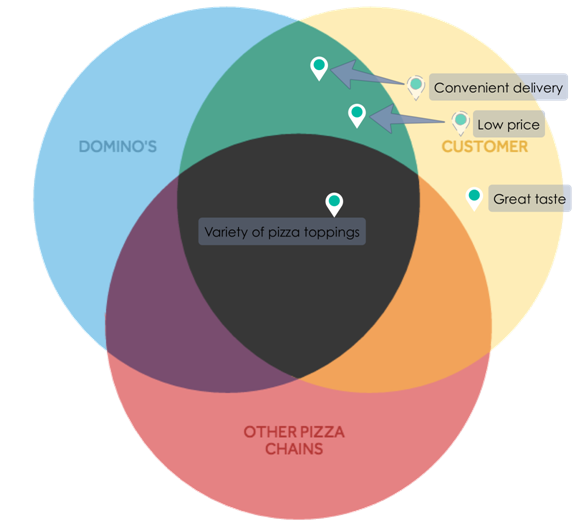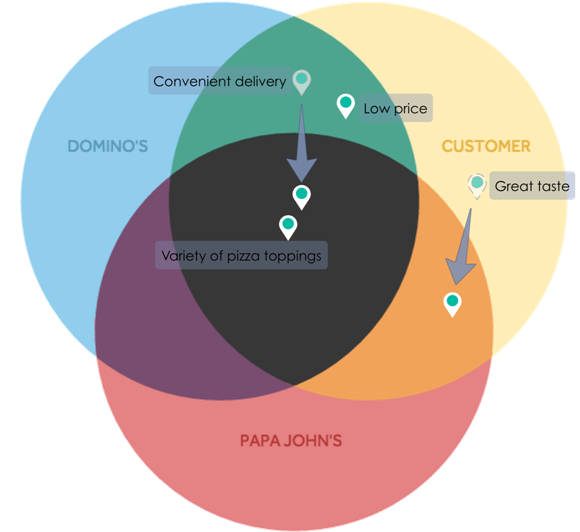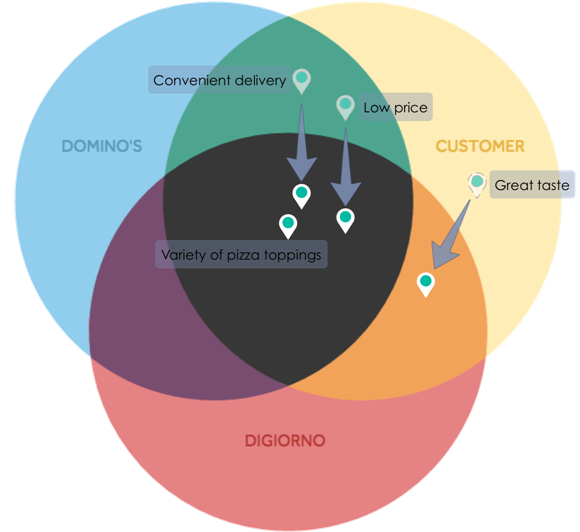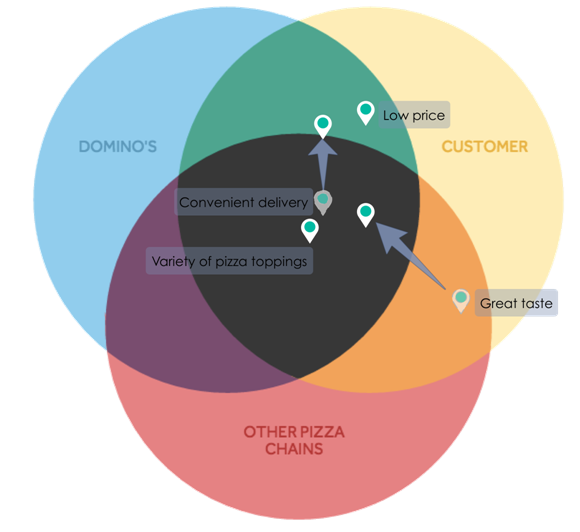Everyone yearns for customer love. However, in business, getting customer love may be easier than keeping it.
Nurturing customer love often means having to change your organization, and reinventing yourself to rekindle that special feeling. Otherwise, competitors may woo your customers away by better listening to their needs.
We recently came across a 2015 Marketplace interview with Domino’s CEO, Patrick Doyle, and started thinking about how to grow your business by strengthening customer love – even growing your business by finding new customers to love.
Domino’s story is a textbook example of how even large and successful organizations are at the mercy of customer preference when seeking to grow.
The Domino’s experience reinforces the importance of continually asking, “Who are your most loyal customers today, and how are we meeting their needs?”
But more importantly, “Who will be the customers to provide the next growth spurt, and how must we change to meet their needs?”
In 1973, Domino’s began offering its 30-minute delivery or free pizza guarantee. By 1985 Domino’s was the fastest-growing pizza chain in the US. Persevering with a single-minded focus, Domino’s cemented its value proposition in 1986 with the “Avoid the Noid” campaign.
At that time, fast delivery and low price is what mattered most to millions of hungry pizza eaters. Even the Teenage Mutant Ninja Turtles knew they could count on Domino’s to deliver on their value proposition.
We can draw a picture to represent Domino’s original strategy. Domino’s identified two unmet needs, “low price” and “fast delivery.” They were already at parity with other pizza places in terms of topping variety, and they may have felt like they were at a disadvantage in terms of “great taste” but no one was really doing it well among the big pizza chains.

They aggressively marketed their 30-minute or less guarantee, and they are credited with popularizing free delivery. These actions moved “low price” and “convenient delivery” away from the customer’s area of unmet need, or Yellow Zone, and into Domino’s Green Zone (its competitive advantage!).
Domino’s market share and volume increased tremendously until… it stopped. Doyle stated:
“This is a company that had built the whole brand around fast and reliable delivery, and Marketing 101 says you focus on your point of differentiation. We kept talking about delivery and 30 minutes or less, and it just stopped working. We realized that everyone in the world who wanted fast convenient pizza was already buying from us, and the people who wanted a great pie simply were not.”
Over the years, the pizza market had changed. Everyone got better at delivery, but, more importantly, companies like Papa John’s entered the market with a value proposition based on “great taste” that appealed to a growing segment of consumers:

To make matters worse for Domino’s, the availability of premium frozen pizzas like DiGiorno’s made the need for quick home delivery less relevant and also neutralized Domino’s price advantage.

Fast forward to 2009. Domino’s position had eroded and growth had stalled. Its stock price was under $10 and a market study showed Domino’s pizza taste was tied for last place among national pizza chains.
What they did next is now a marketing legend. They talked to customers, and then they shared what they heard with the world. It wasn’t pretty. Customers said things like “the crust tastes like cardboard” and “the sauce tastes like ketchup.”
This strategy launched a new relationship with a whole new group of customers. The new customers still valued convenience, but they didn’t care as much about price. Instead, they valued great taste.
Domino’s reformulated the crust, sauce, and toppings after extensive testing. Doyle remarked, “Our sales that first quarter we relaunched were up 14.3 percent. We were up 9.9 percent for the year.” Their new customer-focused strategy was credited with turning the business around.
Most traditional Domino’s customers still find Domino’s to be a low price and convenient option. Those original customers that left have more than been replaced by the growing number of new customers who are pleasantly surprised by Domino’s improvements.
Domino’s learned that listening to customers identified new avenues for growth, and they’ve continued this practice.
Both traditional and new customers benefit from Domino’s acceleration into online ordering – Domino’s Pizza Group says it’s now a “truly digital-first business”, with 91.2% of its sales taking place online, and 42% of system sales via its new mobile app. It may not be delivered via hoverboard, but moving the ordering process to mobile and online, with the goal of ordering in 30 seconds or less, is the 21st-century evolution of convenience that was once characterized solely by quick delivery.

How can you apply Domino’s experience to your own organization? Domino’s growth stalled when it ran out of new customers who valued its low price and quick delivery. Customers seeking great taste had many competing alternatives from which to choose. Dominos adapted and succeeded by becoming loveable to a new group of customers.
Sooner or later, all organizations need to refresh their strategy in order to continue to grow. Today’s market is no longer about defending one strategic advantage over the life of your product but instead requires that you evolve with your customers to maintain your competitive advantage in the market over time.
Ask yourself these questions to rekindle customer love… and maybe find new love as well:
- Who are your most loyal customers today?
- Are we still meeting their needs?
- Who will be the customers to spark your next big growth spurt?
- How must you change what you provide to better meet their needs?


